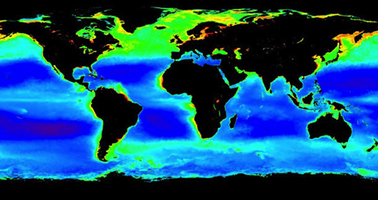View Source | June 27, 2013
 Normally, the Earth maintains a balance of carbon outputs and inputs. However, since the Industrial Revolution, we've been putting more carbon into the atmosphere than Earth can handle.
Normally, the Earth maintains a balance of carbon outputs and inputs. However, since the Industrial Revolution, we've been putting more carbon into the atmosphere than Earth can handle.
Luckily, the ocean absorbs a quarter to a third of our carbon outputs. Part of that comes from really small algae called phytoplankton that turn carbon dioxide into oxygen. When ocean animals eat phytoplankton, they eventually pass fecal pellets, some of which sink to the deep ocean and may even get buried in the sea floor, effectively removing CO2 from the atmosphere.
This is "the only mechanism that can actually permanently bury organic carbon," says Susanne Neuer, a plankton ecologist in ASU ‘s School of Life Sciences and a senior sustainability scientist at the Global Institute of Sustainability. "The carbon is buried on geological time scales, so that’s gone for a very long time."
Oceanographer Neuer is studying this process and phytoplankton's role in climate change mitigation in her lab with undergraduate and graduate student researchers.

